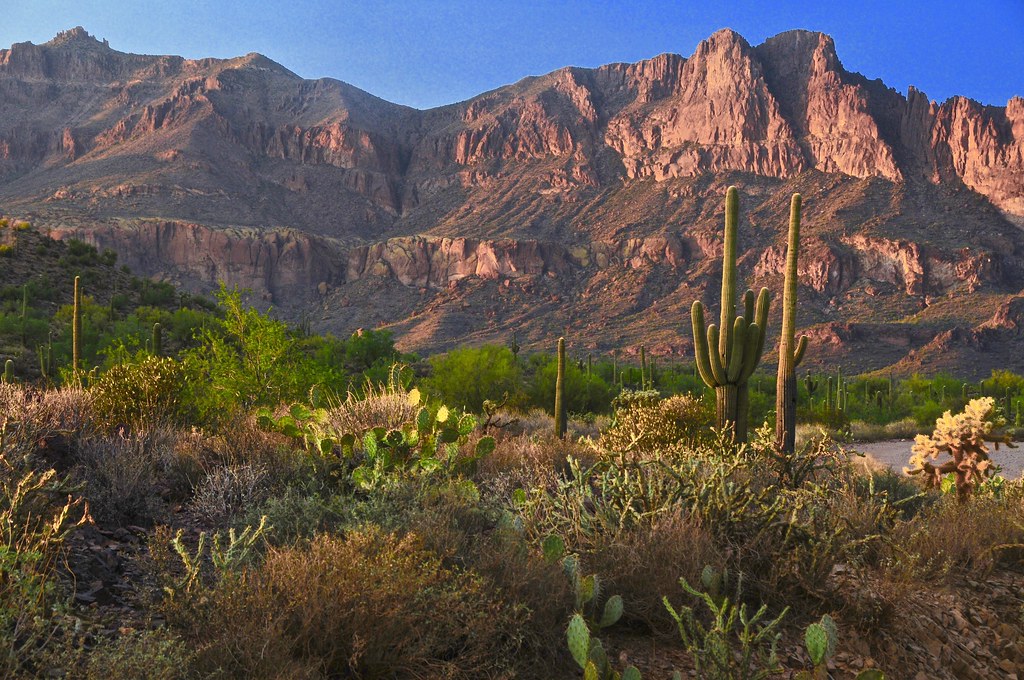Have you ever been captivated by a place shrouded in legend and mystery? A place where the whispers of the past echo through canyons and where adventure beckons the brave? Look no further than the Superstition Mountains of Arizona, a treasure trove of history, myth, and natural beauty.
The allure of the Superstition Mountains began for me, as it does for many, with a chance encounter. A cool map, a conversation with a fellow adventurer at a Tucson REI, and the promise of a magical place just a stone’s throw from Phoenix. The young woman’s words, “You must go. It’s simply beautiful,” resonated with me, and before I knew it, the Superstitions were calling my name.
The Superstition Mountains, or ‘The Superstitions,’ as they are affectionately known, are not just a range of rugged peaks; they are a canvas painted with the rich hues of history and folklore. From ancient floods to pre-Columbian farming, from boom and bust mining to stagecoach travel, and 20th-century hydro power, the Superstitions have seen it all. Nestled north of U.S. Route 60 and cradled by the Salt River Hydroelectric Project, they stand as timeless sentinels over the landscape.
Natural Wonders and Historical Treasures
The Salt River, tamed by dams to form reservoirs like Roosevelt, Apache, Canyon, and Saguaro, is a lifeline in the high Sonoran Desert. It’s an oasis that beckons visitors and wildlife to its shores, a testament to the adage that in the arid southwest, water is indeed wealth.
But it’s not just water that has drawn people to these mountains. The siren call of gold, silver, and other minerals lured many a miner in the 1800s. The legend of the Lost Dutchman’s gold mine, with its elusive mother lode discovered by the German immigrant Jacob Waltz, continues to tantalize treasure seekers to this day. Despite many claims, the true mine remains a secret, its riches untouched.
The Superstitions are steeped in the heritage of the Native Americans who once called this land home. The Hohokam and the Salado left their mark in the form of cliff dwellings and irrigation systems, while the Pima people’s legends speak of a great flood that purged the selfish. To the east, the Fort Apache Reservation adds its own layer of mystique with tales of a hole leading to the underworld, the source of the region’s dust storms.
Exploring the Wilderness
Today, the Superstitions are a playground for those seeking their own legends. The Apache Trail, or Arizona State Route 88, winds through the mountains, offering breathtaking views and access to backcountry solitude. Whether you’re driving, boating, or hiking, the Superstitions promise an adventure that’s as mythical as it is real.

When to visit the Superstition Mountains is as important as how to get there. Tucked within the Tonto National Forest, the mountains offer a variety of access points, from the Apache Trail to U.S. Route 60. Winter months are popular, with moderate temperatures perfect for exploring. But be warned, the weather can be as unpredictable as the legends, with snow occasionally dusting the peaks into March.
Summer transforms the landscape into a hot, dry expanse, with lakes providing a cool respite. Boating is a favorite pastime, with each lake offering marinas and boat rentals. But the monsoon season brings its own dangers, with flash floods a real threat to the unwary traveler.
Camping in the Superstitions is an experience not to be missed. From backcountry sites under starlit skies to established campgrounds with amenities, there’s something for every level of adventurer. Lost Dutchman State Park, Canyon Lake Marina, and Tortilla Campground are just a few options on the west side, while Burnt Corral and Apache Lake Marina cater to those coming from the east or south.
Adventure and Safety
The activities in the Superstitions are as varied as the landscape itself. Hiking trails like the Peralta and Hieroglyphic trails offer stunning views and a glimpse into the area’s ancient past. Mountain biking, horseback riding, OHV trails, slot canyoneering, and rock climbing are just a few ways to immerse yourself in the wilderness.
For those looking for a more relaxed experience, the village of Tortilla Flat provides a taste of the Old West, while the Dolly Steamboat and Tonto National Monument offer unique perspectives on the area’s natural and historical beauty. And no visit would be complete without a stop at the Superstition Mountain Museum, where the legend of the Lost Dutchman’s gold mine lives on.
But the Superstitions are not without their dangers. The mountains have claimed their share of lives, with hikers lured by the legend of hidden gold often paying the ultimate price. The stories of lost souls like Curtis Merworth, Ardean Charles, Malcolm Meeks, and Jesse Capen serve as a stark reminder of the mountains’ unforgiving nature.
To safely enjoy the Superstitions, preparation is key. Staying hydrated, wearing sun protection, and sticking to marked trails are essential. And while the legend of the Lost Dutchman’s gold mine is enticing, it’s best left as just that—a legend.
The Superstition Mountains are more than just a destination; they are a journey into the heart of Arizona’s wilderness. A place where the past and present collide, where adventure awaits, and where the mountains themselves seem to hold the secrets of the universe. So grab a map, pack your gear, and set out to discover the enigmatic Superstition Mountains. Who knows what magic you might find?
Related posts:
Adventure Abound in Arizona’s Superstition Mountains
The Popular But Dangerous Hiking Spot With A Chilling Number Of Disappearances
Superstition Mountains cougar shadow appears only a few days a year





